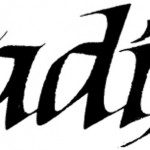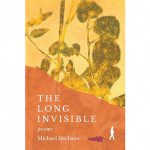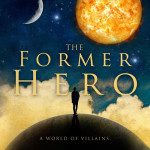When I arrived back at the manor where my great uncle had allowed me residence, reluctantly I might add, there was not an inch of dry fabric in all my apparel. The chill had numbed my fingers and I fancied that my hair was singed by the lightning that dogged me every step of the way, in stark juxtaposition to my near-frostbitten hands. Uncle was abroad and I had the vast dark residence to myself.
 After changing into some dry things, I took my parcel to the steel preparation table in the kitchen. Any tool or measuring device I might need was certain to be at hand. Using scissors to cut away the cardboard outer layer, I found, to my delight, a handsome leather satchel with a brass buckle. I celebrated my good fortune thinking that whatever else I might find, I had already received a good value from the parcel. The smell of the leather was magnificent – not the heady, tart smell of new leather – that leather still shining with the polish and stain of the leatherworker – but leather that is supple and seasoned, that many hands have handled before, and very durable unlike so many cheap imitations made today.
After changing into some dry things, I took my parcel to the steel preparation table in the kitchen. Any tool or measuring device I might need was certain to be at hand. Using scissors to cut away the cardboard outer layer, I found, to my delight, a handsome leather satchel with a brass buckle. I celebrated my good fortune thinking that whatever else I might find, I had already received a good value from the parcel. The smell of the leather was magnificent – not the heady, tart smell of new leather – that leather still shining with the polish and stain of the leatherworker – but leather that is supple and seasoned, that many hands have handled before, and very durable unlike so many cheap imitations made today.
I released the brass buckle and opened the bag with anticipation. Inside to my shock was a burlap sack. “Of all things,” I muttered. To find this rough, prickly layer inside the noble leather covering. Who would conceive of such a thing? I did not pause long to consider the question, but pressed ahead and opened the sack, emptying the contents onto the table. Some articles I recognized. A finger-sized block of graphite. A prism. A crumbling page from an old newspaper. A fifth of premium Kentucky whiskey. In one sealed container was a ball of fur – I could not tell what sort of animal it came from. There were included a half dozen small jars of chemicals with little labels – antimony, iron sulfide, saltpeter and so on.
There was a vial of clear fluid, which at first appeared to be water. Fancy if this is holy water, I thought. Removing the stopper and smelling a distantly familiar odor, I submitted to tasting it. It was clearly salty, but with a faint savor that assured me that it was not a regular chemist’s compound. I gathered its source to be tears. That, or the dew of perspiration, which made me shudder. Tears most likely, I decided. Yes, let it be tears. It was at this point that the sense that I had undertaken a project beyond my abilities, or rather, beyond what my stomach could bear, began to come upon me.
Several other items found in the bag were simply nostalgic articles or mysterious substances wrapped in old wax paper. I found a broken pocket watch for example. I found a charming old locket inlaid with mother of pearl, and a string necklace with several teeth, and a tiny key. Among the substances wrapped in wax paper appeared to be blocks of foundational material, like putty, in a variety of colors. I took a pinch of one color and worked it for a moment, and then mixed in another color, and finally a third and fourth. I pressed them together in my palms until the colors swirled together. Then I molded the swirling putty into the shape of a bowl and began to put various items in it: some crushed graphite, saltpeter, and a good dose of the whiskey, of which I also took a draft and found it to be airy in my sinuses like the effect of turpentine but as potent with its robust, amber gravitas as the company of Latin masters. A few other ingredients were set in the bowl, and I was ready to move to the next stage.
As I mentioned before, my experience with chemistry was of a very different sort. I toyed and fiddled and mixed, but I saw no effect. It seemed I was simply mixing odd materials together without direction. A notion suddenly overtook me that I had been duped. “There is no skill in this,” I thought. “This is a child’s play in a kitchen sink.” What would old Dr. Whitfield have thought if he could see this? I suspect he would have scowled at me from behind those goggles. However, even he could not have anticipated what was really brewing in my little kitchen laboratory.
Granted, there did seem to be a sort of logic to the way the items went together, though it may not be apparent at first. But to me it seemed that my hands were being guided by a outside understanding that came upon me in the presence of the moment. To this day I do not know if it was the muse, or simply my overconfidence pressing me forward.
The little bowl of ingredients sat before me on the table, and I began to look around the kitchen for some instrumentation. Rummaging through drawers and cabinets, I found a hammer for tenderizing meat, a basting brush, a thermometer, and a couple of ripe clementines. I also brought a metal bowl back to the table thinking that I would have to knead the elements together at some point, and I wanted to avoid a mess. But when I had returned to the table, my little putty bowl was trying to close up into a ball by some unseen animating principle. I watched it, and like a flower closing up at night, its little sides were pulling together. This concerned me a little because I had not yet put all the ingredients in and I feared an aborted effort.
Quickly and with great care, I set the object in the metal bowl. Not knowing why, I took the locket and the pocket watch and smashed them with the hammer. Then I put the pieces in the bowl, followed by the animal fur, the key, and, after another swallow for myself, the rest of the whiskey. I squeezed a clementine, letting its citrus juice drizzle into the mix, and I began to knead the mess with my bare hands as I hastily recited a pater noster. The mixture began to seethe and contort in the bowl and I my stomach lurched. It gave off a smell like nothing I’ve ever known. And then finally I knew in my soul the last step that was required. I had to anoint it from the vial of tears.






